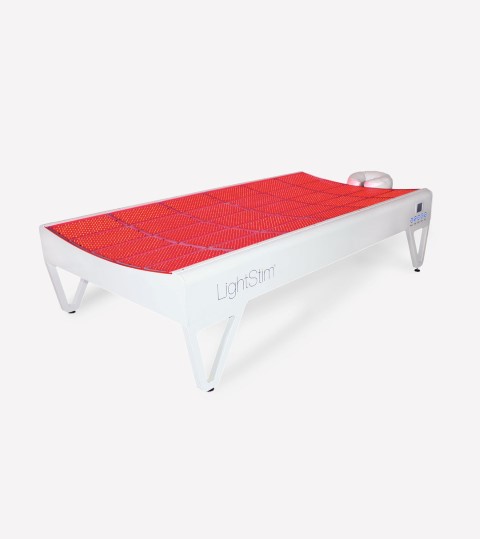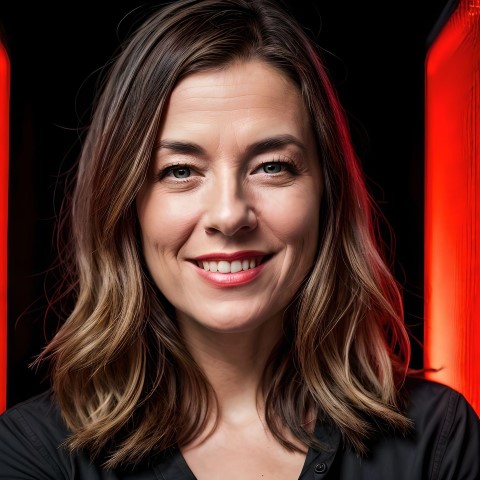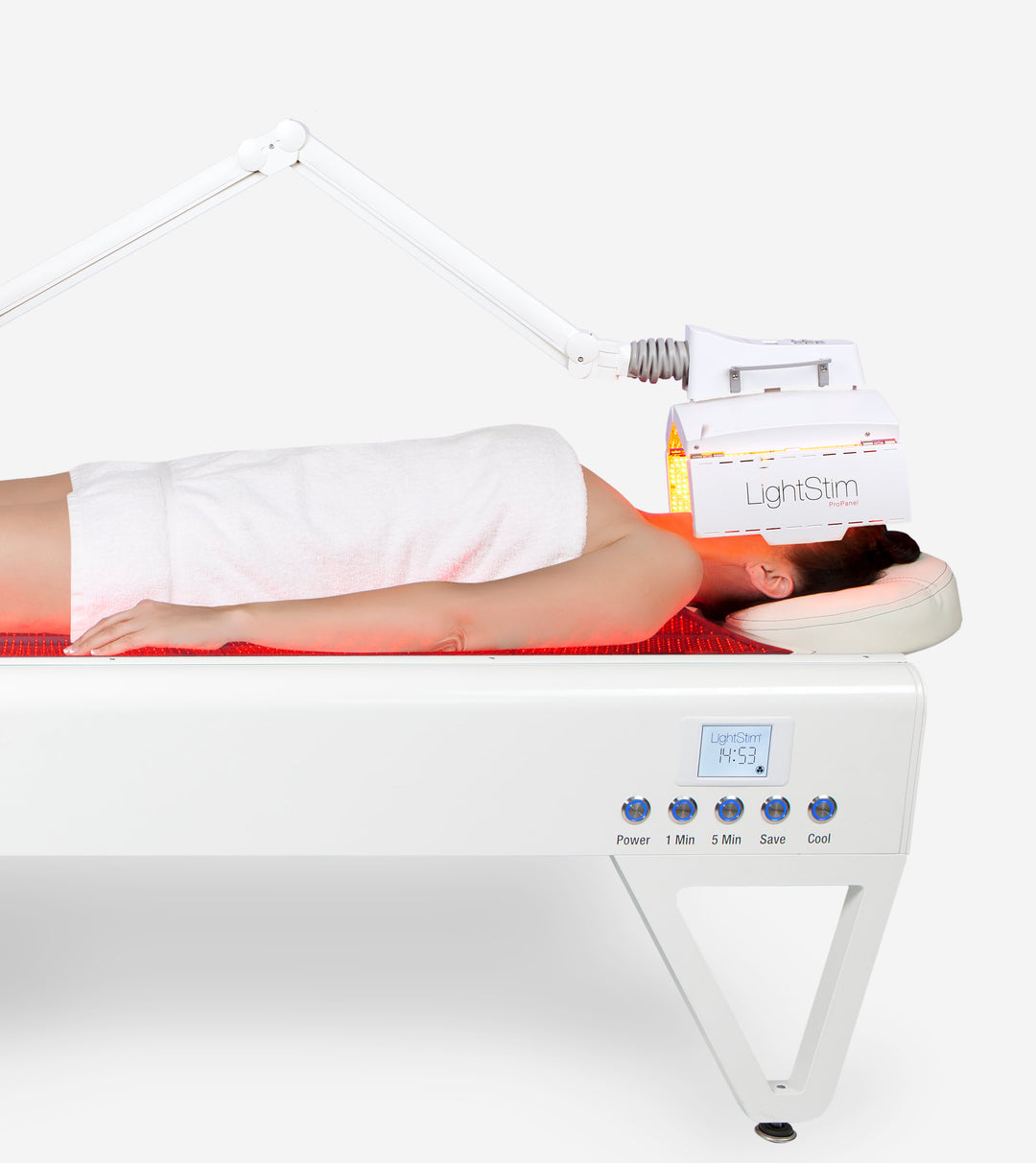What is the LightStim LED Bed?
The LightStim LED Bed, made in the USA and designed at LightStim’s Medical Device-Certified Headquarters, is a multi-purpose wellness solution. Measuring 86” x 40” x 18”, this FDA-cleared bed features 18,000 LEDs that use LightStim's proprietary MultiWave® Patented Technology. Originating from NASA's LED research, this technology emits a spectrum of light from red to deep infrared. These wavelengths offer a host of benefits that range from enhancing blood circulation and alleviating pain to speeding up muscle recovery.
Not just for athletes, the bed is also an all-around health and wellness tool endorsed by medical and wellness professionals. It addresses a wide array of needs, including arthritis pain, post-workout soreness, and even cosmetic concerns like skin rejuvenation. Whether you're looking to relieve physical discomfort or simply improve your general well-being, the LightStim LED Bed offers a comprehensive and non-invasive treatment option.
Good For:
LightStim LED Bed: How Does It Rate?
Pros
- FDA-Cleared: The device is FDA-cleared for treating a variety of conditions, including muscle and joint pain, arthritic pain, and improving blood flow, providing peace of mind about its safety and efficacy.
- Versatility: The bed offers a wide range of health and wellness benefits, from muscle recovery and pain relief to improved mental well-being.
- Research-Backed: Numerous studies validate the effectiveness of the bed's technology in treating various conditions.
- High-Quality Construction: Manufactured in the USA at LightStim's Medical Device-Certified Headquarters, the bed is built to high standards.
- Cutting-Edge Technology: LightStim’s MultiWave® Patented Technology ensures a blend of effective wavelengths for targeted treatment.
- Large Coverage Area: With dimensions of 86” x 40” x 18”, the bed is designed to accommodate users comfortably.
- High LED Count: The bed is equipped with 18,000 LEDs, providing a comprehensive and effective treatment.
- Cosmetic Benefits: In addition to health benefits, the bed offers a host of validated cosmetic advantages like skin rejuvenation.
- Mental Well-Being: The bed has been shown to improve mood and cognitive functions, providing a holistic approach to health.
- Endorsed by Professionals: The LightStim LED Bed is popular among healthcare professionals and athletes for its proven benefits.
- Low-Risk Treatment: Generally considered safe with minimal side effects, making it a preferable alternative to some traditional treatments.
- Longevity: The high-quality LEDs have a long lifespan, making the bed a long-term investment.
- Enhanced Athletic Performance: Particularly useful for athletes looking to speed up recovery and improve performance.
- Customizable Treatment: Depending on the model and settings, you can tailor the treatment to meet your specific needs.
- Quick Sessions: The treatment sessions are usually quick, offering a convenient option for people with busy schedules.
- Eco-Friendly: LED technology is energy-efficient, making it a more sustainable choice compared to some other therapies.
Cons
- Cost: The initial investment for the bed can be high, limiting accessibility for some individuals.
- Space Requirements: Given its dimensions, the bed takes up a significant amount of space, which might not be feasible for smaller living areas.
- Limited Insurance Coverage: Most insurance plans may not cover the cost of this kind of in clinic therapy, adding to the out-of-pocket expenses.
- Not for Everyone: While generally considered safe, it's not suitable for people with certain health conditions. Always consult with a healthcare provider first.
- Maintenance: While the LEDs are long-lasting, they may eventually need replacement, which could incur additional costs.
- Treatment Time: For some, regularly dedicating time for sessions may be inconvenient or impractical.
About the Brand
LightStim's unwavering dedication to excellence shines through their reputable history of over 20 years, making them a distinguished force in the LED light therapy domain. Their FDA-cleared devices, endorsed by dermatologists, estheticians, and plastic surgeons, showcase the brand's commitment to quality and efficacy. Integrating a patented MultiWave® technology, all Lightistim products are manufactured in the USA with meticulous care offering the assurance of durability and therapeutic results.
This legacy of trust is further bolstered by LightStim's compliance with FDA standards, catering to a spectrum of needs from pain relief to cosmetic skincare. Notably, LightStim's distinction extends to the realm of sports medicine, with their partnership with the NBPA Sports Medicine Symposium highlighting their endorsement by athletes and professionals. Their devices are heralded for their versatile applications, addressing muscle soreness, sports injuries, arthritis, and more.
What Are the Benefits of LightStim LED Bed
and How Does it Work?
The LightStim LED Bed employs advanced technology to harness the power of LED laser light to stimulate the mitochondria in cells, boosting the production of ATP, the energy currency of the cell. This mechanism offers a variety of health benefits, which vary depending on the wavelength of the light used.
For skin rejuvenation and wound healing, the bed employs red light, which operates in the 610-760nm wavelength range. A study by Sabrina Rohringer and Wolfgang Holnthoner, published in Scientific Reports, validated the effectiveness of this wavelength in accelerating tissue regeneration and healing wounds.
For deeper tissue concerns like muscle repair and pain reduction, the LightStim Bed utilizes wavelengths from 760nm to 1300nm, covering the infrared and deep infrared spectrum. An article by Frank Thomas Woodbury, M.D., published in JAMA Network, affirms the therapeutic use of these wavelengths for deeper penetration into tissues.
Dr. Paul Nassif M.D, F.A.C.S, a board-certified plastic surgeon based in Beverly Hills, vouches for the LightStim Bed’s comprehensive benefits :
”Lightstim is FDA-cleared for treating muscle and joint pain, arthritic pain and stiffness, increasing blood flow, and circulation to the area. Which by the way, brings in oxygen and all of the nutrients to help heal you faster. The LED Bed is used in my practice in many ways. One, pre-op and post-op, healing, chronic inflammatory arthritis pain, high blood pressure, increasing stamina, and wound healing. Pro athletes use it all the time. ”
The LightStim LED Bed range of remarkable benefits, including:
Accelerates Muscle Healing and Recovery
Elevated ATP levels, stimulated by the bed, foster muscle healing, reduce inflammation, and speed up post-exercise recovery. Improved blood circulation further aids in delivering essential oxygen and nutrients to the muscles. A review in the Journal of Biophotonics by Cleber Ferraresi, Ying-Ying Huang, and Michael R. Hamblin supports the effectiveness of photobiomodulation in muscle repair and athletic performance.
Reduces Pain and Swelling
In particular, infrared light technology penetrates deep into tissues for enhanced healing and reduced inflammation. It may even inhibit key pain receptors. A study led by George D Gale, Peter J Rothbart, and Ye Li, published in Pain Research and Management, found that infrared therapy was notably effective in alleviating chronic back pain.
One other pilot study by John Foley and David B. Vasily, featured in Laser Therapy, confirmed that university athletes experienced significant reductions in pain and inflammation, along with improved healing, after 15 months of consistent treatment with similar technology.
Enhances Mental Well-Being and Cognitive Function
LED light therapy also promotes the production of crucial neurotransmitters like dopamine, serotonin, and acetylcholine. This helps to improve mood, reduce stress, and sharpen cognitive abilities such as focus, learning, and memory. Research published in Behavioral and Brain Functions by Fredric Schiffer and Andrea L Johnston et al. revealed that a single treatment of infrared light therapy could improve symptoms of depression within 2-4 weeks.
Furthermore, these health and wellness benefits are complemented by a wide array of cosmetic benefits that have been validated through thousands of studies and clinical trials.
Quick Facts & Features
| Brand | LightStim |
|---|---|
| Product | LightStim LED Bed |
| Form | Full-body-sized bed measuring 86” in length (including headrest), 40” in width, and 18” in height. |
| Specification | Light Red, Dark Red, Infrared, Deep Infrared – 18,000 LEDs , Medical Grade |
| Safety | FDA Compliant |
| Age | Adults, children with medical approval |
| Skin Type | All types |
| Benefit | Reducing pain and inflammation, relaxing muscles, repairing wounds and tissue, rejuvenating the skin, boosting mood and brain health, improving exercise performance etc. |
| Price | Apprx $65.000 |
| Shipping | Free Shipping |
| Warranty | 5 Years |
| Purchase | Official website |
How to Use It?
Using the LightStim LED bed is a simple and relaxing experience. After you lie down on the bed, the device is activated, enveloping your body in therapeutic light. You remain there for the duration of the session, which is typically about 20 to 30 minutes, as the LED lights work to rejuvenate your cells and promote overall well-being. At the end of the session, the device automatically shuts off, signalling that your therapy is complete.
Safety
LightStim products are designed with safety in mind, they have received FDA clearance and are generally considered non-invasive and painless. They have been used and recommended by healthcare and skincare professionals for years. However, it's important to consult with your healthcare provider if you have specific medical concerns, or pre-existing conditions or are on medications that could contribute to photosensitivity.
Notably, the safety of using red light therapy products like those offered by LightStim is not well-studied in pregnant or breastfeeding women. Therefore, if you are pregnant or nursing, it's crucial to consult your healthcare provider before starting any form of light therapy to ensure it's appropriate for you.
Any Side Effects?
While LightStim products are designed to be safe and non-invasive, as with any therapy, individual reactions may vary. Always consult with your healthcare provider if you have any pre-existing conditions, are on medications or if you have any concerns as red light therapy may not be suitable for everyone.
Some users might experience temporary skin redness or mild irritation after exposure. It's always important to follow the manufacturer's guidelines and consult with a healthcare professional if uncertain about any potential reactions.
Frequently Asked Questions
What is the LightStim LED Bed?
The LightStim LED Bed is an FDA-cleared device designed for various health and wellness applications. It uses LED light therapy to offer a range of benefits such as muscle recovery, pain relief, and skin rejuvenation.
How does the LightStim LED Bed work?
The bed uses LightStim's MultiWave® Patented Technology, emitting different wavelengths of light that penetrate the skin and underlying tissues to stimulate cellular activity, boost ATP production, and promote healing.
Is the LightStim LED Bed FDA-cleared?
Yes, the LightStim LED Bed is FDA-cleared for treating muscle and joint pain, arthritis, and increasing blood flow and circulation.
What are the dimensions of the LightStim LED Bed?
The bed measures 86” in length, 40” in width, and 18” in height.
How many LEDs does it have?
The LightStim LED Bed features 18,000 LEDs that emit light in a spectrum ranging from red to deep infrared.
How often should I use the LightStim LED Bed?
Frequency may depend on your specific needs and goals. Consult your healthcare provider for personalized recommendations
Can athletes use the LightStim LED Bed?
Yes, the bed is popular among professional athletes for its benefits in speeding up muscle recovery and alleviating pain and inflammation.
What kind of studies back the effectiveness of the LightStim LED Bed?
Multiple studies validate the bed's effectiveness. These include research in the Journal of Biophotonics for muscle healing, Pain Research and Management for chronic back pain, and Behavioral and Brain Functions for mood improvement.
What is the cost of a LightStim LED Bed?
Prices may vary based on location and provider. It's best to consult directly with LightStim or authorized distributors for the most current pricing information however the indicated price is approx $ 65.000.
Are there any side effects or risks?
The LightStim LED Bed is generally considered safe with low risks of side effects. However, consult your healthcare provider before starting any new treatment, especially if you have specific health concerns.
Can it be used for mental well-being?
Yes, the bed has shown potential in improving mood and cognitive function, although individual results may vary.
Conclusion
Body Balance System stands at the forefront of medical technology, specializing in red light therapy solutions suitable for home and professional settings. Their extensive range includes light therapy beds, detoxification systems, and massage chairs, catering to individual consumers as well as wellness centers, medical clinics, and spas. Recognized and endorsed by various medical professionals, these products resonate with their efficacy and quality.
Feedback for Body Balance System has been overwhelmingly positive. Both individual users and professionals in the medical and wellness industries attest to the effectiveness of the technology, emphasizing its value for the investment.
As a brand that prioritizes safety and efficacy, Body Balance System holds FDA clearance. They uphold stringent manufacturing and testing protocols, ensuring that every product meets high safety standards. It's noteworthy to mention that users can expect no risks or side effects when using Body Balance System products, given their adherence to quality.
Red light therapy is a type of therapy that uses red or near-infrared light to treat a variety of conditions. During a red light therapy session, a person is exposed to a specific wavelength of red or near-infrared light that is delivered through a light-emitting device. The light penetrates the skin and reaches the cells within the body with a range of therapeutic effects.
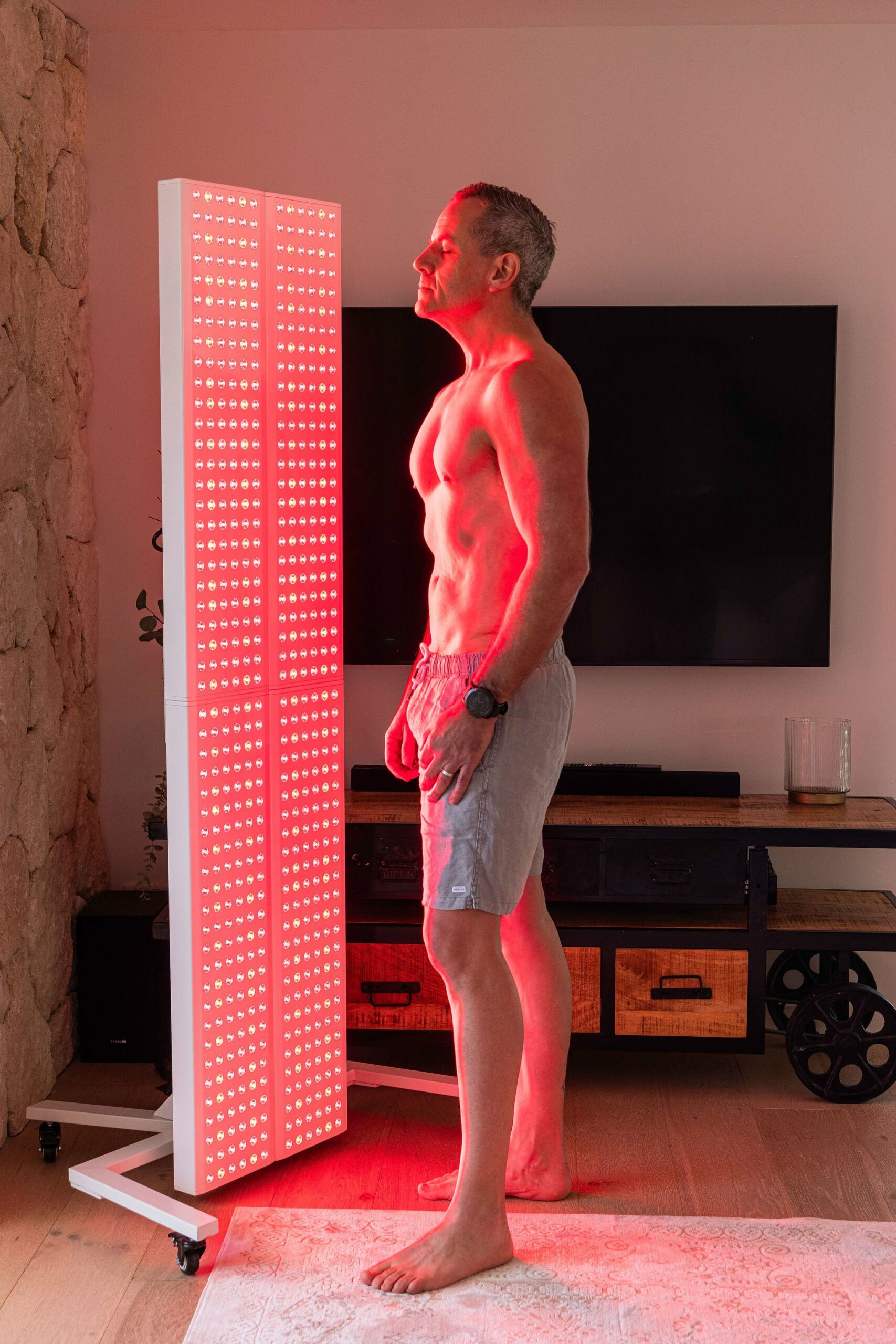
Red light is a type of visible light, Its wavelength falls between approximately 630 and 700 nanometers (nm) on the electromagnetic spectrum. Red light is often used in light therapy treatments for the skin, as it has been shown to have the most beneficial effects on skin cells and collagen production.
Near-infrared (NIR) light, on the other hand, has a longer wavelength than visible red light and falls between approximately 700 and 1200 nm on the electromagnetic spectrum. NIR light is not visible to the human eye, but it can penetrate deeper into the skin and other tissues than visible light, making it useful for a variety of therapeutic applications ranging from wound healing to inflammation reduction or improved circulation, among other benefits.
Different Red Light Therapy devices usually deliver slightly different wavelength ranges that research has shown to be the most effective for the concern they are being recommended for.
Red Light Therapy (RLT) strengthens the mitochondria, the cell’s powerhouse, where cell energy is created. Adenosine Triphosphate (ATP) is the critical energy-carrying molecule that is found in all living organisms. By optimizing the function of the mitochondria, more ATP is produced and with increased energy cells can function optimally.
This scientific breakthrough resulted in scientists discovering Red Light Therapy’s ability to stimulate and speed up tissue repair and growth. Red Light Therapy is now widely used for maintaining a healthy complexion, speeding up muscle recovery, reducing inflammation, improving sleep, treating neurological conditions, balancing hormones, treating pain, and even losing weight.
Research has also indicated that Red Light Therapy can help to restore cellular balance and alleviate the negative impact of blue light exposure. The prevalence of blue light in our society has become a growing concern as many individuals spend prolonged periods of time looking at screens on a daily basis.
Red Light Therapy (RLT) is also called:

Low-Level Light Therapy (LLLT), Photobiomodulation (PBM), Cold Laser Therapy, Photonic Stimulation, Low-Power Laser Therapy (LPLT), Phototherapy
A Brief History of Red Light Therapy
The journey of Red Light Therapy (RLT) has been both fascinating and impactful, starting from its humble origins in the late 19th century. Dr. Niels Ryberg Finsen, the pioneer in light therapy, made a groundbreaking discovery in 1896 that light could be harnessed to treat Lupus Vulgaris, a form of tuberculosis affecting the skin. His work, which led to the tangible healing of skin lesions, was so revolutionary that he received the Nobel Prize in Physiology in 1903.
Fast forward to 1960, Theodore H. Maiman invented the first operational laser, fulfilling Albert Einstein's theories on the principles of lasers laid out in 1917. This invention opened new avenues for RLT, allowing more precise applications.

NASA took an interest in Red Light Therapy in 1987, conducting experiments to examine its effects on plant growth in space missions. These studies hinted at RLT's potential to benefit not just human health but also broader ecological systems.
In the same vein, Endre Mester's work in 1967 set the stage for modern RLT applications.
His experimentation with low-level laser therapy on skin cancer effects demonstrated the technique's efficacy and led to FDA approval for wound healing in 2002.
The advent of LED technology in the 1990s was a game-changer, offering an efficient and cost-effective alternative to traditional light bulbs. This technological leap made light therapy more accessible to the general public, including its use in sports medicine where physical therapists reported quicker recovery times for sports-related injuries.
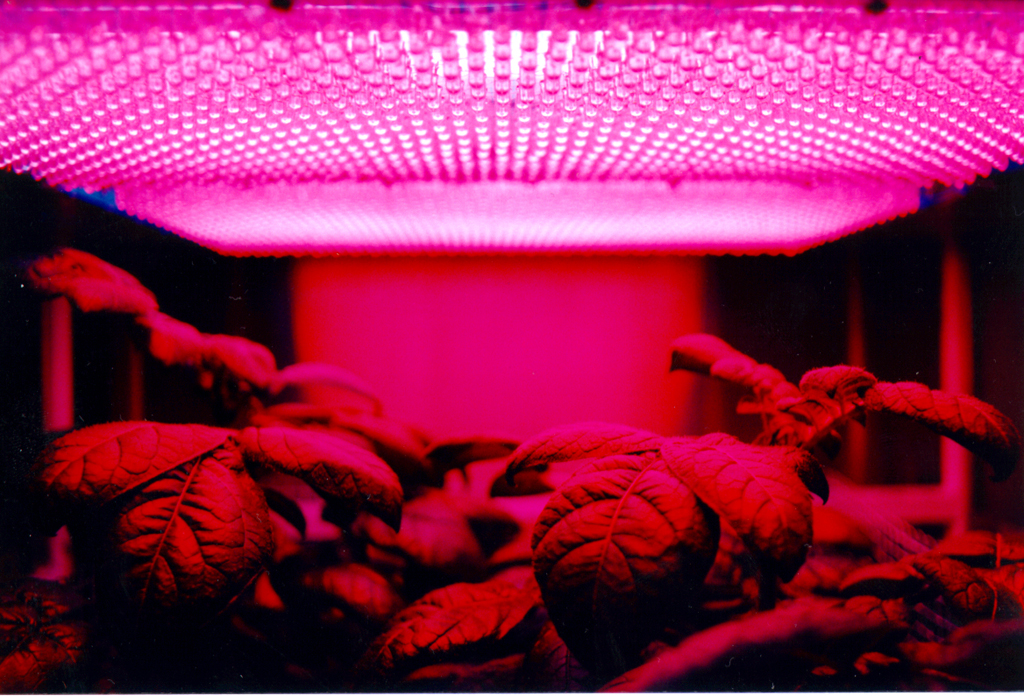
One of the most recent and exciting developments in RLT is its potential role in weight management. Studies indicate that Red Light Therapy can influence hormones like Leptin and Ghrelin, which play key roles in regulating appetite and metabolism. This makes RLT a promising avenue for non-invasive weight loss treatments.
As RLT continues to evolve, its applications keep expanding, crossing multiple disciplines from medicine to ecology. Researchers are continuously probing its potential, finding new ways to apply this age-old yet ever-advancing technology.
Our articles exclusively rely on primary sources of information, encompassing peer-reviewed medical journals and esteemed academic institutions.
- The Impact Of Wavelengths Of LED Light-Therapy On Endothelial Cells: https://www.nature.com/articles/s41598-017-11061-y
- The Use Of Infra-Red Light Therapy: https://jamanetwork.com/journals/jama/article-abstract/233327
- LightStim LED Bed Beverly Hills | LightStim LED Bed Anti Aging Treatment Los Angeles (drpaulnassif.com) https://www.drpaulnassif.com/medspa/led-light/
- 830 Nm Light-Emitting Diode (Led) Phototherapy Significantly Reduced Return-To-Play In Injured University Athletes: A Pilot Study – PMC (nih.gov) https://www.ncbi.nlm.nih.gov/pmc/articles/PMC4846838/
- Photobiomodulation In Human Muscle Tissue: An Advantage In Sports Performance?: https://www.ncbi.nlm.nih.gov/pmc/articles/PMC5167494/
- Infrared Therapy For Chronic Low Back Pain: A Randomized, Controlled Trial: https://www.ncbi.nlm.nih.gov/pmc/articles/PMC2539004/
- Psychological Benefits 2 And 4 Weeks After A Single Treatment With Near Infrared Light To The Forehead: A Pilot Study Of 10 Patients With Major Depression And Anxiety: https://www.ncbi.nlm.nih.gov/pmc/articles/PMC2796659/
- Red LED Photobiomodulation Reduces Pain Hypersensitivity And Improves Sensorimotor Function Following Mild T10 Hemicontusion Spinal Cord Injury: https://jneuroinflammation.biomedcentral.com/articles/10.1186/s12974-016-0679-3
- Effects Of Low-Power Light Therapy On Wound Healing: LASER X LED: https://www.ncbi.nlm.nih.gov/pmc/articles/PMC4148276/
- Photobiomodulation: The Clinical Applications of Low-Level Light Therapy: https://pubmed.ncbi.nlm.nih.gov/33471046/\
- Infrared Radiation in the Management of Musculoskeletal Conditions and Chronic Pain: A Systematic Review: https://www.ncbi.nlm.nih.gov/pmc/articles/PMC8946909/
- Phototherapy with Light Emitting Diodes: Treating a Broad Range of Medical and Aesthetic Conditions in Dermatology: https://www.ncbi.nlm.nih.gov/pmc/articles/PMC5843358/

